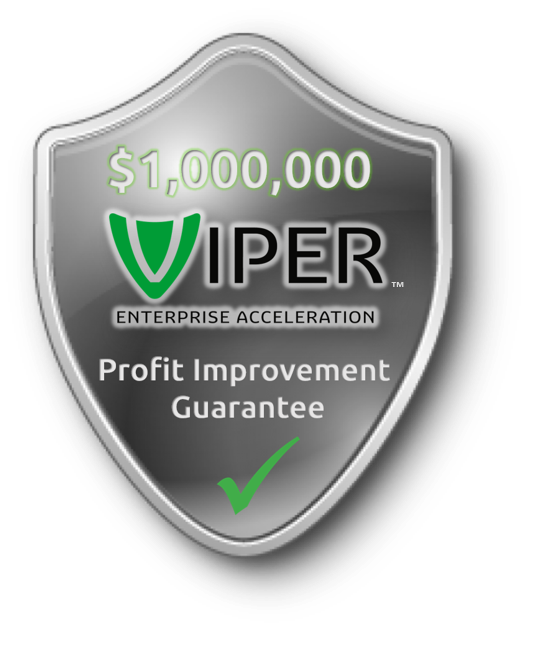
SURVIVAL TIPS FOR LUXURY DEPARTMENT STORES
VIPER THOUGHT LEADERSHIP SERIES #2
By Ed Stagman and Monica Woo
8 minute read
All fifty states are in various degree of reopening amidst volatility of COVID-19, civil rights protests and an uncertain economy. On May 7, the Neiman Marcus Group filed for Chapter 11 bankruptcy protection. A week later, JCPenney did the same. Lord &Taylor might liquidate. The survival of department store chains is hanging in the balance. Ed Stagman, former Senior Vice President, Store Operations at Saks Fifth Avenue provided insightful advice on how luxury department stores can thrive, during his conversation with Monica Woo, CEO of WooWorks, which advises and invests in digital commerce and AI.
Monica Woo: To quote Charles Dickens, “It was the best of times, it was the worst of times.” Ed, based on your 34-year career at Saks Fifth Avenue, do you predict a winter of hope, or a winter of despair for luxury department stores and retail in general?
Ed Stagman: As an optimist, I hope for a winter of regeneration marked by a vaccine for COVID-19 and economic upturn. Neiman Marcus’ challenges were predicted, and, regrettably, not addressed in time. Burdened by $4 billion in long-term debt, Neiman Marcus has not been able to appropriately invest in store renovations and eCommerce. Also, their tactic of selling and then leasing back the most attractive real estate during the 2008 Recession did not help the balance sheet. On the other hand, Saks Fifth Avenue was more successful in eCommerce, which achieved annual double-digit growth in consecutive years.
When I see how upmarket retailers like Saks Fifth Avenue and Nordstrom are proactively improving their balance sheet and profitability to fortify against the economic volatility, I believe we will prevail by focusing on the right priorities.
MW: What are the priorities to address?
ES: Right now, the profitability of luxury department stores and all retailers is attacked by a perfect storm. Incremental investments in health and safety measures to protect associates and customers. Reduction in store traffic, due to social distancing practice and shortened store hours for additional sanitizing. Expansion of lower-margin eCommerce channel, and increased expenses to provide in-store pick-up and direct delivery for online sales.
To offset the profitability drain, management at corporate, regional and store level need to fix two root causes of profit leakage: sales reduction and margin depletion activities.
Sales reduction activities include poor shopping experience, sub-optimal inventory to sales ratio, shrink, employee and customer thefts, and prolonged delivery time prompting order cancellations or returns.
Margin depletion activities include ineffective pricing, poor merchandising mix, excessive discounting which is not offset by overall ticket size increase.
MW: That is a great list but could be daunting to store managers who are already fighting many fires. Due to cutback in district managers during an economic downturn, regional managers are even more overworked. What advice do you have to help field management to “do it all”?
ES: Yes, the stress on field and corporate operations management is tremendous. My simple advice to regional managers: bolster your ability to manage remotely with data analytics. Pinpoint sales and profit depletion activities by store location, and guide store managers with pragmatic solutions that plug the leaks. Most retailers have limited capability in analyzing performance both at scale and at a hyperlocal level. I recommend outsourcing to a company like VIPER EA LLC, a leading retail analytics company.
MW: How does VIPER EA work?
ES: VIPER EA collects and integrates massive volume of data across physical and digital channels, POS, inventory management, supply chain, financial and human resources systems. By combining extensive data science and retail operating expertise, as well as the computational power of proprietary Machine Learning models, VIPER can swiftly isolate and quantify systemic problems and operational deficiencies hurting profit.
VIPER determines not only incremental profit opportunities, but also, practical actions to improve performance by store — with full drill down to the location, personnel and item level.
VIPER’s analytics dashboard provides a regional manager clear visibility to the operational deficiencies impeding each store’s sales and profit, and the solutions to fix the problems. A regional manager can coach half a dozen store managers by phone in one day and save lots of time and money travelling to geographically dispersed stores.
MW: I couldn’t resist asking this question, Ed. What would be the top three actions you would recommend to Hudson’s Bay if they were to acquire Neiman Marcus and consolidate with Saks Fifth Avenue?
ES: First, optimize the store footprint. City by city, identify which Saks Fifth and Neiman Marcus stores to operate, or to shutter. I would base the decision not only on each store’s historical performance, but also, future sales and profit upsides. This will require analyzing a complex matrix of KPIs, as well as predicting results to different scenarios. Here’s where VIPER’s AI capability will be valuable.
Second, fulfill direct delivery of online sales not just from stores or warehouses closest to the customers, but from slow-moving stores. This will protect the required inventory for fast-turning stores and improve inventory to sales ratio across the enterprise. Of course, effective rate negotiation with delivery service providers will be critical.
Third, use the combined sales clout of both banners to strengthen the negotiation power with the luxury brands’ owners. In this way, shift the control on brand selection, inventory level and merchandising mix to the retailers.
MW: Thank you, Ed, for your wise and pragmatic advice. We look forward to a fall and winter of regeneration.
Ed Stagman is the CEO of Retail Consulting LLC. He advises the board of Luxury Institute which is a research, training and business solutions partner for over 1,100 luxury and premium goods and services brands. He is also on the advisor board of VIPER EA LLC and BECCO. Previously, Ed was the Senior Vice President, Store Operations at Saks Fifth Avenue, where he led for 34 years.
Monica Woo is the CEO of WooWorks, which invests in and advises digital commerce, AI and omni-channel retail. Previously , she was President of 1-800-Flowers.com and Bacardi Global Brands, and Chief Revenue Officer of FreshDirect. She is an advisor to the Board of VIPER EA LLC.



